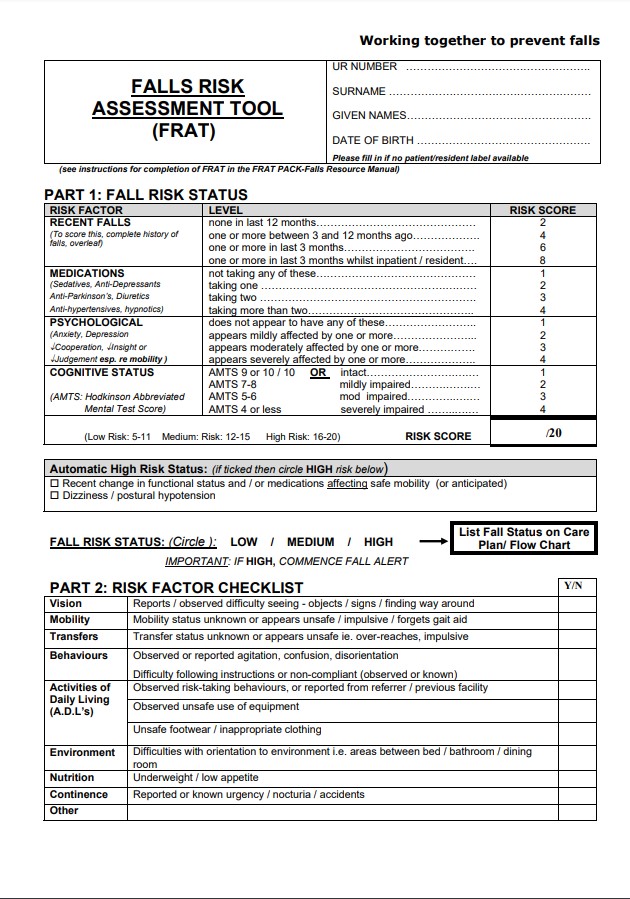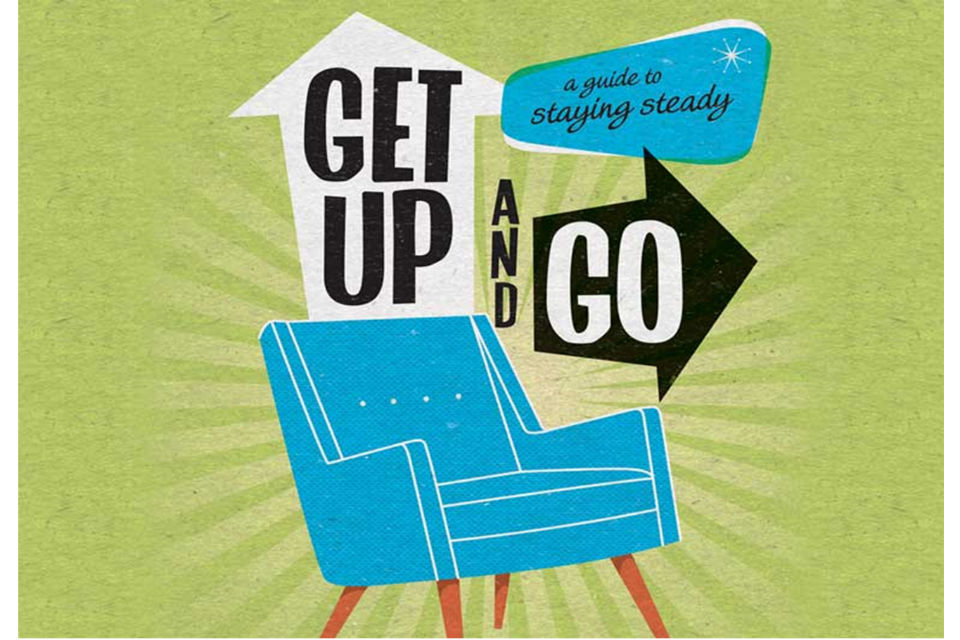Little Known Facts About Dementia Fall Risk.
Little Known Facts About Dementia Fall Risk.
Blog Article
Dementia Fall Risk Can Be Fun For Everyone
Table of ContentsThe Basic Principles Of Dementia Fall Risk Little Known Questions About Dementia Fall Risk.Unknown Facts About Dementia Fall RiskDementia Fall Risk - An OverviewThe Of Dementia Fall Risk
Analyzing fall risk helps the entire healthcare team develop a safer atmosphere for each and every patient. Ensure that there is a marked location in your clinical charting system where personnel can document/reference scores and record appropriate notes connected to fall prevention. The Johns Hopkins Loss Danger Evaluation Device is one of numerous devices your team can use to help stop damaging clinical events.Client falls in healthcare facilities are usual and devastating negative events that persist regardless of years of initiative to lessen them. Improving interaction across the assessing registered nurse, care group, patient, and person's most involved loved ones may reinforce autumn prevention initiatives. A team at Brigham and Female's Hospital in Boston, Massachusetts, looked for to develop a standard fall avoidance program that focused around enhanced communication and person and family members interaction.

The technology group highlighted that successful application depends on client and staff buy-in, integration of the program right into existing process, and fidelity to program processes. The team noted that they are coming to grips with just how to make sure connection in program implementation during periods of situation. Throughout the COVID-19 pandemic, for example, a rise in inpatient falls was connected with constraints in person involvement in addition to limitations on visitation.
Get This Report on Dementia Fall Risk
These occurrences are generally considered avoidable. To implement the intervention, companies need the following: Access to Loss TIPS sources Autumn TIPS training and retraining for nursing and non-nursing team, including brand-new registered nurses Nursing workflows that enable patient and family members engagement to carry out the drops assessment, make sure usage of the prevention plan, and perform patient-level audits.
The results can be extremely destructive, frequently speeding up person decline and triggering longer medical facility remains. One research estimated stays enhanced an added 12 in-patient days after a person fall. The Loss TIPS Program is based upon appealing people and their family/loved ones across three main processes: evaluation, customized preventative interventions, and bookkeeping to make certain that patients are participated in the three-step autumn avoidance procedure.
The person analysis is based upon the Morse Loss Range, which is a validated fall risk assessment tool for in-patient medical facility setups. The range consists of the 6 most usual factors patients in hospitals drop: the individual autumn history, high-risk conditions (including polypharmacy), use IVs and various other exterior tools, psychological standing, stride, and flexibility.
Each threat variable relate to one or even more workable evidence-based interventions. The registered click here now nurse creates a strategy that integrates the treatments and shows up to the care group, person, and household on a laminated poster or published aesthetic help. Nurses create the strategy while meeting the person and the person's household.
Dementia Fall Risk - Questions
The poster acts as an interaction tool with various other members of the patient's treatment team. Dementia Fall Risk. The audit part of the program includes assessing the individual's understanding of their threat aspects and prevention strategy at the unit and hospital degrees. Registered nurse champions perform at the very least 5 individual top article interviews a month with patients and their family members to look for understanding of the autumn avoidance plan

An estimated 30% of these drops result in injuries, which can vary in severity. Unlike various other damaging events that need a standardized medical response, fall avoidance depends extremely on the needs of the patient.
How Dementia Fall Risk can Save You Time, Stress, and Money.

Based on bookkeeping results, one site had 86% conformity and two websites had over 95% conformity. A cost-benefit analysis of the Fall ideas program in eight health centers estimated that the program price $0.88 per individual to implement and caused cost savings of $8,500 per 1000 patient-days in straight costs related to the avoidance of 567 falls over 3 years and eight months.
According to the advancement team, companies interested in carrying out the program should carry out a preparedness evaluation and drops prevention gaps evaluation. 8 In addition, companies must guarantee the essential facilities and process for execution and establish an application strategy. If one exists, the organization's Autumn Avoidance Task Force need to be associated with preparation.
Dementia Fall Risk Things To Know Before You Get This
To start, organizations need to guarantee completion of training components by registered nurses and nursing aides - Dementia Fall Risk. Health center staff should evaluate, based on the needs of a healthcare facility, whether to utilize a digital health document hard copy or paper variation of the loss avoidance strategy. Applying groups must hire and train registered nurse champions and establish procedures for auditing and coverage on autumn data
Personnel need to be entailed in the procedure of upgrading the operations to involve individuals and household in the evaluation and discover here prevention plan process. Solution should remain in area to make sure that systems can comprehend why a fall occurred and remediate the reason. Extra particularly, nurses should have channels to provide recurring responses to both personnel and unit management so they can readjust and enhance fall prevention workflows and connect systemic issues.
Report this page